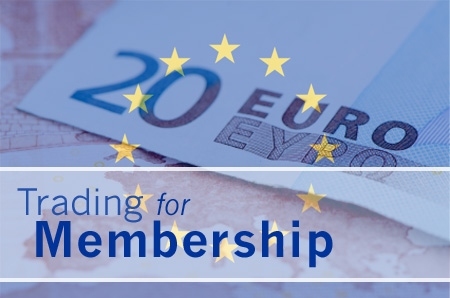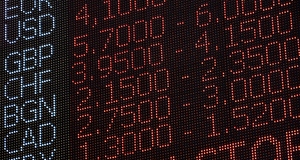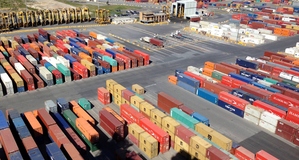Trading For Membership: Effects of EU Candidacy on Trade Openness and GDP Per Capita in Countries Seeking Membership
By
2012, Vol. 4 No. 01 | pg. 1/2 | »
IN THIS ARTICLE
KEYWORDS
Does candidacy to the European Union (EU) increase a nation’s Trade Openness? A good way to begin examining this question is by asking, what is Trade Openness? Simply put, it is a nation’s imports plus its exports divided by its GDP ([imports+exports]/GDP). This statistic is important because it provides an easy and accurate measure of how much any given nation trades with the rest of the world. A higher Trade Openness means a nation either does a great deal of importing, exporting, or some combination of the two. Holding all other variables equal, a high level of exports implies that the nation in question produces goods or services of value to the rest of the world and does business with them; while a high level of imports implies that a nation’s economy is strong or robust enough to deal with foreign goods entering the marketplace in high volume.  This is important to the EU when considering the application of any candidate because the Union wants to ensure that the candidate will be a viable trade partner and will be able to handle the pressure of EU member goods along with maintaining the Four Freedoms (free movement of people, goods, capital, and labor across the EU). This is important to the EU when considering the application of any candidate because the Union wants to ensure that the candidate will be a viable trade partner and will be able to handle the pressure of EU member goods along with maintaining the Four Freedoms (free movement of people, goods, capital, and labor across the EU).
Since, barring very drastic and rare circumstances, raising exports by a large percentage from one year to the next is difficult because the goods and services have not appreciated in value, candidates must import more in order to increase the numerator of the Trade Openness function and make themselves appear more valuable. This proposal proceeds as follows: Section I expands on my methodology of research; Section II examines and outlines the arguments making up the debate over candidacy’s effect on openness; Section III analyzes trade data of analytically significant candidates from multiple decades; and Section IV analyzes and concludes my findings. I: MethodologyI have gathered Trade Openness, Purchasing Power Parity (PPP), and Gross Domestic Product per capita (GDP per capita) data on every EU country (calculated in chained 2005 dollars), including current candidates, from 1950-2007, and, I compare how a country’s Trade Openness increases over the course of their candidacy while observing its relationship to other variables. Using this data, I compiled a dataset, organized by country and year, and coded two dummy variables “Candidate” and “Member” for sorting purposes. When both dummies have a value of 0, the nation is unaffiliated with the EU, then, as the years progress, either Candidate or Member are assigned values of 1 (denoting years of candidacy and membership), making trends across periods easier to observe and calculate. Assessing the impact of candidacy on Trade Openness is not straightforward because perfect data do not exist to give us a definitive answer, but finding out which of the Trade Openness relationships holds true gives us a better understanding of how the EU works and how their economic priorities influence policy. II: The DebateUsing the data compiled by the Center for International Comparisons of Production at the University of Pennsylvania (AKA Penn World Tables), I measure Trade Openness as a percent of a country’s GDP using 2005 as the base year.1 In all cases, Trade Openness increases as the years of candidacy and membership go on. I argue that the only way for such dramatic jumps in openness to occur is for the candidate to begin importing more and more from member nations of the EU. Nilson Lars discovered that “The EU is, by far, the candidate countries' most important trading partner.”2 Using EU trade data and studying trends, Lars noted that, especially during times of candidacy, one observes several candidate countries display greater increases in trade with the EU than would have occurred based on statistics and trends.3 This trade boom, according to Lars, is heavily centered on the candidate importing a great deal from member states. Since the data from Lars and University of Pennsylvania confirm that candidates trade more than they would normally with the EU, the next question becomes: why? Using “data on sovereign debt instruments from thirty-four emerging markets,”4 Julia Gray determined that “EU candidacy leads to a decrease in perceived default risk, while EU entry decreases the variance of risk levels,”5 attracting more foreign investment from international agents. To paraphrase, Gray found that when a smaller nation joins a political and economic union, investors are less worried that the country will default on loans or collapse politically, because they see that the country has an elaborate support system to prevent such a collapse. With this in mind, Jonathan Slapin’s findings seem to make more sense. Using financial benefits, political stability, and veto power (to name a few) as variables, Slapin found that “joining a highly regarded international organization may confer some benefit on states, regardless of how these states feel about the organization’s policy, which they would not receive if they did not join the organization,”6 but it is how much of a say the nation has in the organization that will determine whether or not the nation remains a member. Entering benefits of membership and the amount of say a country has (be it veto power or favorable vote weight) as variables in a game, Slapin found that the more a country’s voice is heard, the more likely it is to remain a member and the more willing it will be to resign itself to conditionality and institutional-hazing for membership.7 Candidates wish to join the EU for all manner of benefits and are more than willing to deal with the strict conditions Alan Mayhew found the EU imposes to create the “perfect member state.”8 All things considered, the data point to a symbiotic relationship between the Union and candidate countries. Pressures to import goods and alter economic policies are imposed to make sure the candidate is robust enough to add to the Union, and in exchange, candidates receive membership to a powerful organization that bolsters their economies, makes them more attractive to investors, and gives them a voice in all decision making processes. While Lars and Grey refrain from declaring how openness and candidacy relate to each other, their data makes the best case for an openness-causes-candidacy stance. In “Trajectories of Change in Europe’s Regions,” Dunford and Smith discovered that using “Purchasing Power Standards (PPS),” the EU has decided that one of the most important economic considerations for candidates is the “capacity of different national and regional economies to create wealth.”9 The easiest way for a country to prove its ability to do this is to buy from member states, proving its worth to the powers that be. Heather Grabbe acknowledges all that has already been said about candidates’ Trade Openness, but she makes the interesting observation that “most candidate countries tend to engage in anticipatory adjustment to EU policies, as well, adopting EU norms or practices before the European Union tells them to do so.”10 Grabbe holds that countries know exactly what is expected of them in terms of EU accession, and, to get a head start, they begin to alter policy and trade with members in ways to bring their openness up to desirable levels.11 By her logic, it is very difficult to determine whether countries are becoming more open to trade because they know they will become candidates to the EU, or if their preemptive policy changes lead to candidacy offers. Unraveling this mystery has proven difficult, and so the debate continues.Continued on Next Page » Suggested Reading from Inquiries Journal
Inquiries Journal provides undergraduate and graduate students around the world a platform for the wide dissemination of academic work over a range of core disciplines. Representing the work of students from hundreds of institutions around the globe, Inquiries Journal's large database of academic articles is completely free. Learn more | Blog | Submit Latest in Political Science |
















